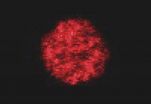(Press-News.org) Employers planning to implement mandatory influenza vaccination policies for health care workers need to understand the implications, according to an analysis published in CMAJ (Canadian Medical Association Journal).
Vaccination rates among health care workers are less than 50%, well below the level necessary for herd immunity. Evidence indicates that vaccination of health care workers can benefit patient health, leading to a move by many to consider mandatory influenza vaccination as a condition of employment or to require employees to wear a mask during influenza season. Many health care workers favour condition-of-service influenza vaccination policies.
However, in Canada, condition-of-service policies must comply with employment law, provincial human rights codes and the Canadian Charter of Rights and Freedoms. Condition-of-service policies that apply to unionized employees must be consistent with collective labour agreements, and vaccination policies should allow exemptions for religious beliefs and practices.
"With respect to the rights to liberty and security, vaccinate-or-mask policies have been found not to violate liberty or security rights, because the vaccine is not mandatory and masks are insufficiently invasive to violate these rights," states Dr. Allison McGeer, Mount Sinai Hospital, Toronto, Ontario, with coauthors.
Most legal cases around vaccination policies have weighed in favour of patient safety.
"Vaccinate-or-mask policies for influenza vaccination in health care organizations result in substantial increases in the vaccination rates among health care workers, are supported by most health care workers and, based on decisions to date, are likely to be found in compliance with Canadian law. …Physicians and employers should work together to find the best means to improve vaccination rates and protect both patients and providers from influenza," conclude the authors.
INFORMATION:
Implications of mandatory flu vaccinations for health-care workers
2014-05-26
ELSE PRESS RELEASES FROM THIS DATE:
Neurons can use local stores for communication needs
2014-05-26
Researchers reveal that neurons can utilize a supremely localized internal store of calcium to initiate the secretion of neuropeptides, one class of signaling molecules through which neurons communicate with each other and with other cells. The study appears in The Journal of General Physiology.
Neuropeptides are released from neurons through a process that—like other secretory events—is triggered primarily by the influx of calcium into the neuron through voltage-gated channels. Although neuropeptides are stored in large dense core vesicles (LDCVs) that also contain ...
Fighting cancer with dietary changes
2014-05-26
(PHILADELPHIA) -- -- Calorie restriction, a kind of dieting in which food intake is decreased by a certain percentage, has been touted as way to help people live longer. New research suggests that there may be other benefits, including improving outcomes for women in breast cancer. According to a study published May 26th in Breast Cancer Research and Treatment, the triple negative subtype of breast cancer – one of the most aggressive forms – is less likely to spread, or metastasize, to new sites in the body when mice were fed a restricted diet.
"The diet turned on a ...
Novel drug target linked to insulin secretion and type 2 diabetes treatment
2014-05-26
This news release is available in French. A signal that promotes insulin secretion and reduces hyperglycemia in a type 2 diabetes animal model is enhanced by the inhibition of a novel enzyme discovered by CHUM Research Centre (CRCHUM) and University of Montreal researchers. The team is part of the Montreal Diabetes Research Center and their study, published recently in Cell Metabolism, was directed by researchers Marc Prentki and Murthy Madiraju.
Insulin is an important hormone in our body that controls glucose and fat utilization. Insufficient insulin release by the ...
Promising approach to slow brain degeneration in a model of Huntington's disease uncovered
2014-05-26
This news release is available in French. Research presented by Dr. Lynn Raymond, from the University of British Columbia, shows that blocking a specific class of glutamate receptors, called extrasynaptic NMDA receptors, can improve motor learning and coordination, and prevent cell death in animal models of Huntington disease. As Huntington disease is an inherited condition that can be detected decades before any clinical symptoms are seen in humans, a better understanding of the earliest changes in brain cell (neuronal) function, and the molecular pathways underlying ...
The Lancet Oncology: UN officials warn refugees are struggling to access cancer treatment
2014-05-26
A study published in The Lancet Oncology journal reveals a high demand for costly cancer treatment among refugees from the recent conflicts in Iraq and Syria, with host countries struggling to find the money and the medicine to treat their new patients. The findings have prompted calls from lead author Dr Paul Spiegel, the United Nations High Commissioner for Refugees (UNHCR) Chief Medical Expert, for innovative financing schemes to improve access to affordable high-quality cancer care for refugees.
In the first study of its kind, Spiegel and colleagues examined data ...
A new molecule for high-resolution cell imaging
2014-05-25
Like our own bodies, cells have their own skeletons called 'cytoskeletons' and are made of proteins instead of bones. These network-like structures maintain the cell's shape, provide mechanical support, and are involved in critical processes of the cell's lifecycle. The cytoskeleton is an object of intense scientific and medical research, which often requires being able to observe it directly in cells. Ideally, this would involve highly-fluorescent molecules that can bind cytoskeletal proteins with high specificity without being toxic to the cell. Publishing in Nature Methods, ...
DNA nanotechnology places enzyme catalysis within an arm's length
2014-05-25
VIDEO:
In the middle of a DNA scaffold is affixed a single strand of DNA, with NAD+ tethered to the end like a ball and string. ASU Professor Han Yan refers...
Click here for more information.
Using molecules of DNA like an architectural scaffold, Arizona State University scientists, in collaboration with colleagues at the University of Michigan, have developed a 3-D artificial enzyme cascade that mimics an important biochemical pathway that could prove important for future biomedical ...
Gene mutation found for aggressive form of pancreatic cancer
2014-05-25
Researchers at the University of California, San Diego School of Medicine have identified a mutated gene common to adenosquamous carcinoma (ASC) tumors – the first known unique molecular signature for this rare, but particularly virulent, form of pancreatic cancer.
The findings are published in the May 25 advance online issue of Nature Medicine.
Pancreatic cancer is the fourth leading cause of cancer-related death in the United States, with roughly 45,220 new cases diagnosed and more than 38,400 deaths annually. Both numbers are rising. ASC cases are infrequent, but ...
Mice with 'mohawks' help scientists link autism to 2 biological pathways in brain
2014-05-25
"Aha" moments are rare in medical research, scientists say. As rare, they add, as finding mice with Mohawk-like hairstyles.
But both events happened in a lab at NYU Langone Medical Center, months after an international team of neuroscientists bred hundreds of mice with a suspect genetic mutation tied to autism spectrum disorders.
Almost all the grown mice, the NYU Langone team observed, had sideways,"overgroomed" hair with a highly stylized center hairline between their ears and hardly a tuft elsewhere. Mice typically groom each other's hair.
Researchers say they ...
Buried fossil soils found to be awash in carbon
2014-05-25
MADISON, Wis. — Soils that formed on the Earth's surface thousands of years ago and that are now deeply buried features of vanished landscapes have been found to be rich in carbon, adding a new dimension to our planet's carbon cycle.
The finding, reported today (May 25, 2014) in the journal Nature Geoscience, is significant as it suggests that deep soils can contain long-buried stocks of organic carbon which could, through erosion, agriculture, deforestation, mining and other human activities, contribute to global climate change.
"There is a lot of carbon at depths ...


